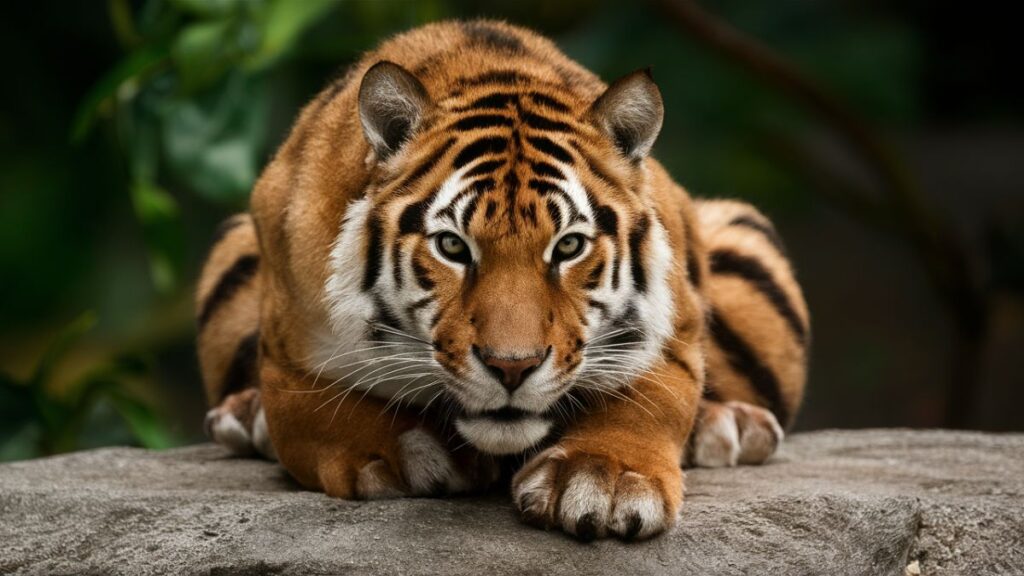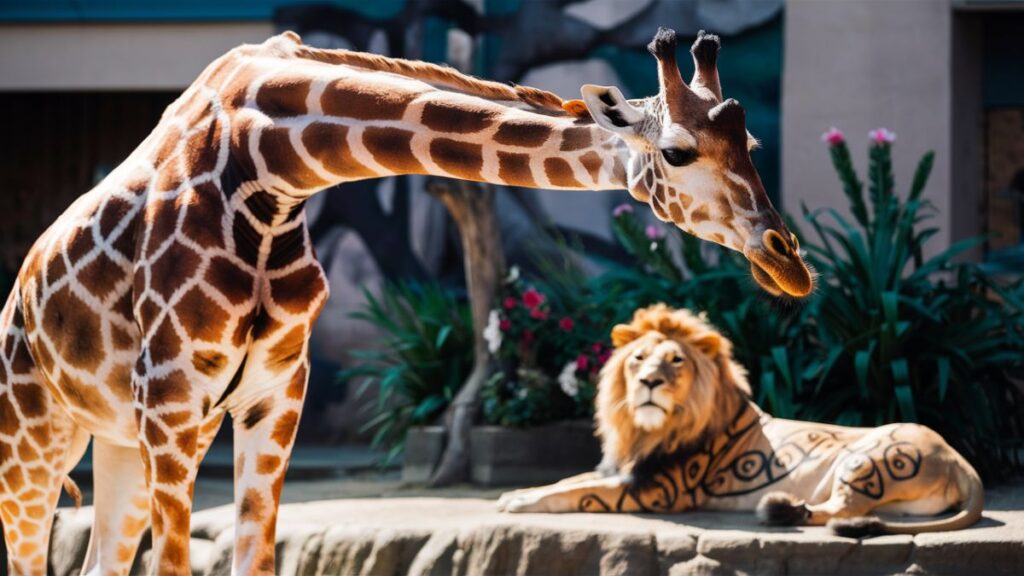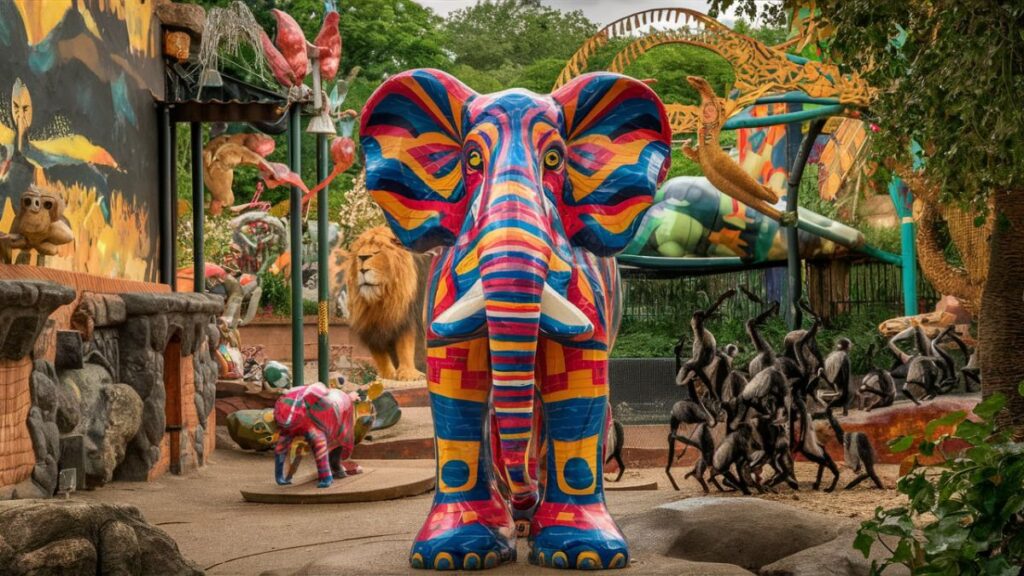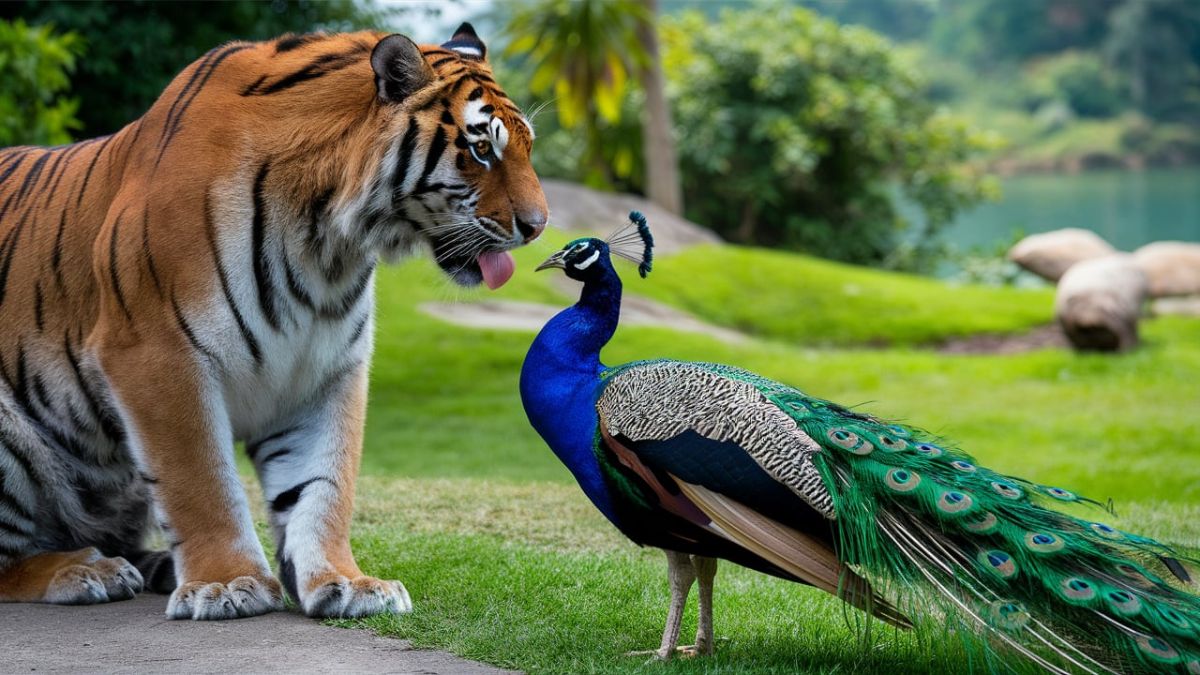Art of Zoo has always followed zoos. There is a rather intimate relation between zoos and art. Zoos negotiate and mimic the society’s power relations as well as abuse of animals. They can also be a means for the arts, promoting art and community and ties with members.
Historical Overview

Artists incorporated animal imagery in art since prehistoric art and including depicting animals on the surfaces of the caves. He said that animals found artwork prevalent in the ancient Egyptians though most of them are in religious aspects while the Greeks and Romans also embraced the use of animals in their artwork.
Iconographic use of animals was common in Renaissance art and returned to Baroque painting. After the evolution of zoos in 19th century artists started painting animals, there are many paintings from that period.
Art Forms

Artists have painted zoos in various styles, with painting being the most common medium. Famous examples include Peter Paul Rubens’ “The Lion Hunt” and Frans Snyders’ “The Monkey and the Cat.”
Sculpture is another important kind of art; as for zoo sculptures one can mention “Elephants” by Auguste Rodin and “Gorilla” by Alberto Giacometti. Art can enhance the zoo visitor’s experience and provide more animal information in several ways.
Themes and Interpretations

Even the themes and interpretations of the art work displayed at the zoo website can be as numerous as the types of art available. Some artists put into the zoological parks the ideas about the way we treat animals, others – they express their appreciation of the beauty of the creation and its variety. There are those artists who use the zoo to depict society while others goals are to paint animals as realistically or in a certain style.
Art Within a Zoo Environment

Most zoos have adopted art in their displays through sculpture, painting, installation or gimmickry.
Integration with Exhibits
Art can complement the activity by making zoo visits more enjoyable and quite different. It is also has a function of an information center that educates people about critical environmental concerns that endanger wildlife.
Case Studies
Of course, today there are many zoos, which successfully apply art to improve people’s experience and popularise knowledge about animals. The San Diego Zoo, for instance, has art work; a gorilla sculpture by Alberto Giacometti, and a mural by Robert Rauschenberg.
Impact on Zoo Visitors
This area houses some animals in captivity, yet they retain freedom to roam and interact with visitors. Nevertheless, it serves as a stark reminder of animal suffering and human cruelty. It can also much assist in forming an empathy between the visitors and the animals, and it can also lead to the visitors doing something for the animals.
Zoo as a Metaphor
In capturing the power relationships in society, as well as animals’ suffering at the hands of people, zoos are indeed symbolic. For instance, artists may depict animals as muscular and, therefore, resistant to all sorts of harm or animals as domesticated and affectionate. Secondly, the illustration of animals in art may have demonstrated society that the artist existed in.
Animal Representation
We also could learn from art how the culture regards animals as well as the set beliefs of the culture. Such can be in the form of educational programmes, arts competition and community development projects within the facet of the zoo’s management.
Ethical Implications
Fate of animals in zoos gives rise to a number of ethical issues. There are people who argue that keeping animals in the zoos is inadmissible and pointed to animal suffering. Some people opinion is that zoos contribute to the conservation and education of animals and can protect species.
Zoo as a Place for Artistic Expression
Zoos also can turn to be artistic walls where many options of art involvement within the framework of a zoo are possible. Here, two ways that zoos can employ art for informance include; The zoos can hold art competitions and fairs.
Educational Programs
It can organise art classes for Children and adult, it can get to associate with local art school to develop art projects” They may also assist in enhancing the creativity and fantasy of children as well as cause them to be conscious of the significance of preservation.
Community Engagement
Art has the potential of enhancing the experience of visitors in the zoo, passing on information and changing how people look at animals. This can serve for forming the idea of community, and, furthermore, it might be effective for creating awareness of the work of the zoo towards the conservation of species.
Impact on Zoo Culture
The role of art in the culture of the Zoo is that it can stimulate creativity and hence create a new innovative form of culture. It also has an advantage of increasing social acceptability by hopefully making environments together more welcoming for visitors.
Conclusion
There is quite a rich relationship between zoos and art, one that goes beyond merely picturing animals and illustrating nature. Moreover, it is important to admit that many zoos give the reflection of the society and the idea of the human tip over animals. Besides, there is scope for art and creativity, social development, and art making in the case of the zoos.
FAQs: The Art of Zoo
How can one link between Zoos and Arts be defined?
To this day, it is quite common to see artists visit zoos in the hope of finding inspiration for their work, which is why it is quite possible to describe the relationship between the two as rather symbiotic.Art can be added to exhibits, used as a tool to tell a particular story or help spread the message of the need to conserve the environment.
How is art then used in the different capacities in Zoos?
There are many ways that art can be located in or compliment zoos such as sculptures, murals, installations and mobile art works. They can be employed in complement to augmenting exhibits, in narrating a particular story and even for raising conservation consciousness.
Art and Zoo Visitors
In what manner does art influence zoo patrons?
These influences can be wide-ranging and profound, enhancing the zoo visitors’ awareness of animals, forging emotional bonds, and motivating conservation actions. It is also able to promote the convenience of visitors in their general experience.
To what extent can art contribute to education in zoological centres?
Absolutely! As shown from the various works of art analysed in this paper, art can be a very useful medium of passing very key messages to people, particularly on issues of animal conservation and their natural environment.
Ethical Considerations
What is an ethical issue that can be discussed through art in relation to zoos?
Zoos are a debatable topic and talk about ethical questions connected with zoos, including animal rights, conservation, or man-animal interactions, in the form of art. It can stimulate the mind into thinking and move people into doing something.
How does art contribute to the cause of animal conservation?
Art can create the awareness of the various animals that are on the brink of extinction, which may prod someone into actively contributing to their conservation. Through making people develop social bond with animals, art engages them in processes of conservation.

